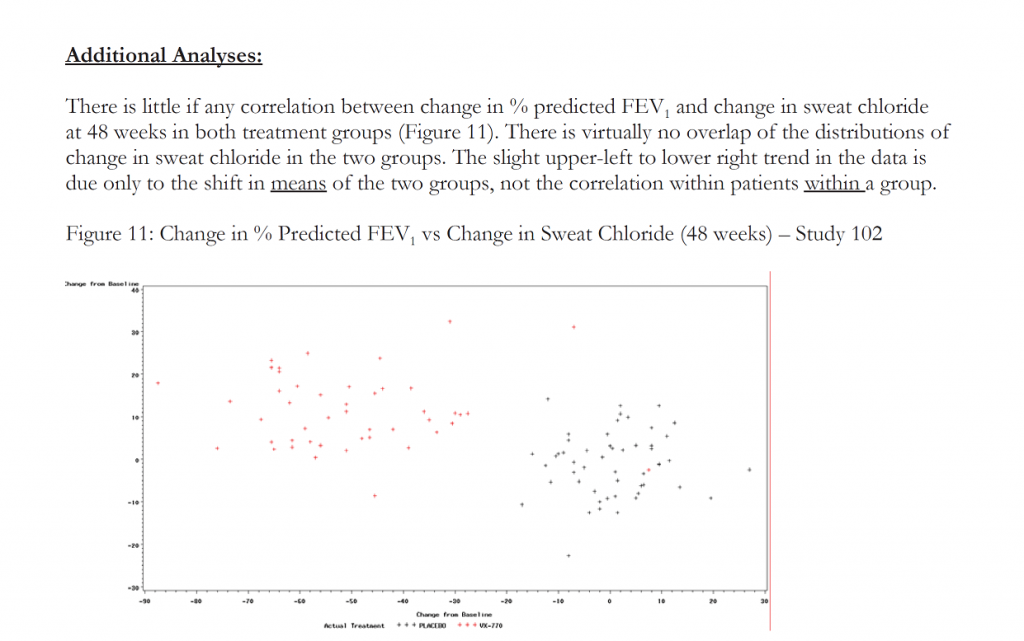Vertex released interim data May 7th of an ongoing combination study of VX-809 and KALYDECO in Cystic Fibrosis patients with two copies of the F508del mutation. Results were very good- VX809 plus Kalydeco led to significant improvements in lung function (as measured by absolute change in percent predicted FEV1).
| Treatment Group | Absolute Improvement from Baseline in Lung Function (FEV1) (Baseline — Day 56) | ||
| ≥ 5 percentage points | ≥ 10 percentage points | ||
| VX-809 alone (200mg, 400mg or 600mg) for 28 days followed by KALYDECO (250mg, q12h) + VX-809 (200mg, 400mg, 600mg dose groups combined) for 28 days | 46% (17/37) | 30% (11/37) | |
| Placebo | 0 (0/11) | 0 (0/11) | |
There was a second endpoint of reduction of sweat chloride. This endpoint was not met at the interim analysis. Even so, Vertex shares have since soared 73% from $37.41 to $64.70 on the strong lung function data. Analysts noted reduction in sweat chloride had not correlated with improvement in lung function for Kalydeco, Vertex’s CF drug for patients with the G551D mutation.
Below is a dot plot comparing Change in % Predicted FEV1 vs Change in Sweat Chloride from the Kalydeco study. Y-axis is FEV1, X-axis Change in Sodium Chloride; Red is VX-770 (Kalydeco), Black is Placebo. Notice there is no correlation.

I am unsure if the data was measured, but it may be interesting to see if Kalydeco or VX-809 have any effect on mucus clearance. CF causes a large build-up of sticky mucus in the lungs, leading to difficulty breathing and often, infections. An increase in mucus clearance has been shown to increase lung function. In this study with inhaled hypertonic saline, it is suggested “measures of sustained mucus clearance may serve as a useful surrogate outcome.” Inhaled hypertonic saline genereated a modest 5% improvement in lung function.
Author has no position in any companies mentioned.
Dot Plot Image from FDA













